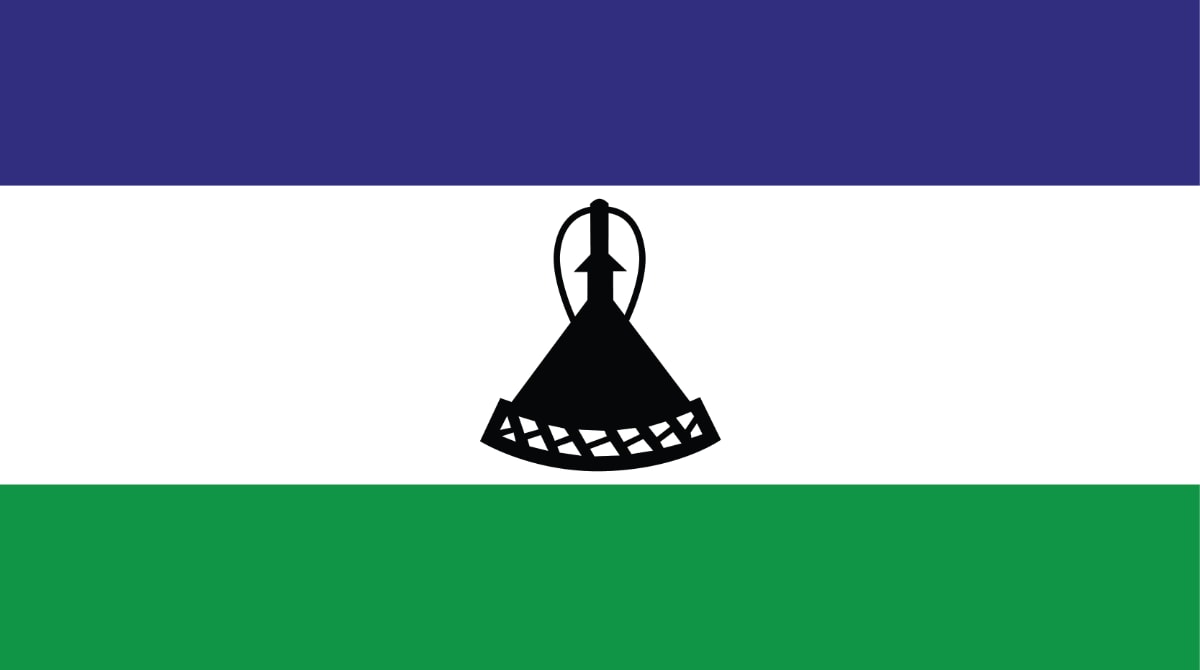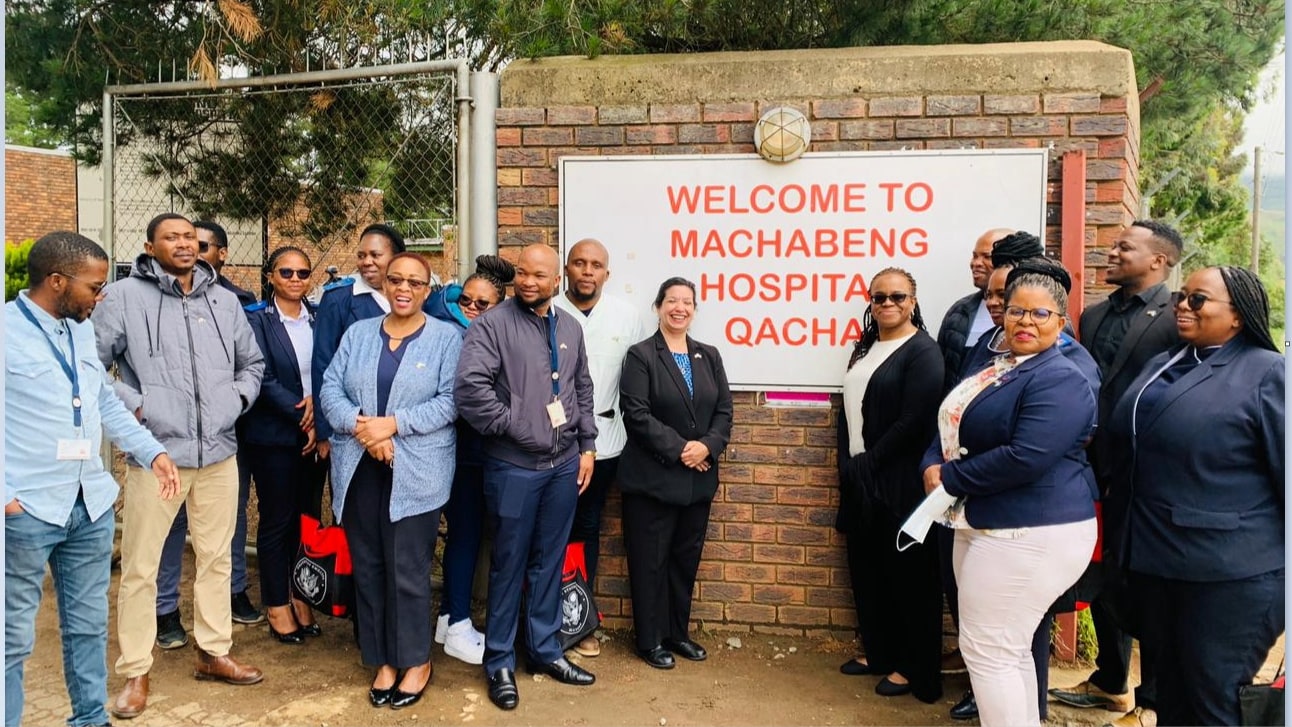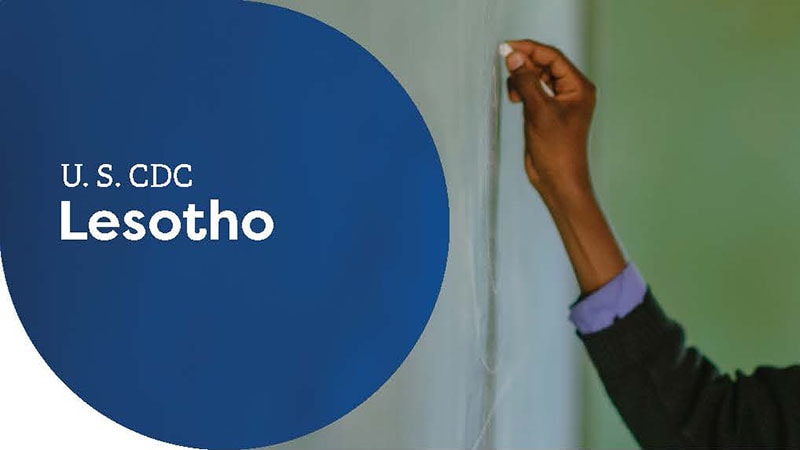At a glance
CDC works with the Ministry of Health (MOH) and other partners to build effective public health collaboration and partnerships, which strengthen the country's core public health capabilities: data and surveillance, laboratory capacity, workforce and institutions, prevention and response, innovation and research, and policy, communications, and diplomacy.

Overview

CDC established an office in Lesotho in 2007. CDC Lesotho works closely with the Government of Lesotho and partner organizations to detect, prevent, and control infectious disease outbreaks, and build and strengthen the country's core public health capabilities. These include data and surveillance, laboratory capacity, workforce and institutions, prevention and response, innovation and research, and policy, communications, and diplomacy. CDC's work aims to protect the health of our nations and public health around the world. CDC Lesotho also works to address global health security, HIV, tuberculosis (TB), and border health.
Global health security
Laboratory systems
In collaboration with partners, CDC provides technical support to implement quality laboratory systems, diagnosis and monitoring tests, and new diagnostic technologies for HIV and TB, COVID-19, and other high-priority diseases. CDC also helps strengthen local workforce capacities for effective coordination of laboratory programs to improve the quality of services like testing and sample transportation.
Emergency response
CDC's longstanding partnerships and investments in laboratory systems and disease surveillance enabled Lesotho to leverage existing infrastructure to respond to COVID-19 and other health threats. CDC Lesotho supports access and delivery of COVID-19 vaccines, disease surveillance, and outbreak control, and robust reporting of COVID-19 cases to information systems.
CDC also collaborated with WHO to provide technical guidance on the rational use of personal protective equipment and development of IPC training.
Key achievements
- Lesotho's National Reference Laboratory received a five-star rating in 2021 from the African Society for Laboratory Medicine.
- CDC helped partners increased demand for COVID-19 vaccines through risk communication and community engagement activities across ten districts.
HIV and TB
CDC has partnered with the Government of Lesotho since 2007. Through the U.S. President's Emergency Plan for AIDS Relief (PEPFAR), CDC partners with Lesotho's Ministry of Health and partners to build a robust national HIV response. CDC provides technical assistance and administrative leadership in:
- Scale-up of HIV prevention and treatment services.
- Scale-up and quality assurance of HIV testing services to find missing people living with HIV, including recent infection surveillance.
- Disease surveillance, including implementation of population-based surveys.
- Monitoring and evaluation.
- Health management information systems.
- Public health policies.
- Diagnosing, treating, and managing TB, multidrug-resistant TB, and TB/HIV coinfection.
Key achievements
CDC has supported the following accomplishments:
- Lesotho achieved the UNAIDS 90-90-90 targets with:
- 90.1% of people living with HIV who now know their status
- 97.5% of those that know their status are on antiretroviral therapy (ART)
- 91.5% of those on ART are virally suppressed.
- 90.1% of people living with HIV who now know their status
- Implementing the first (2016) and the second Population-based HIV Impact Assessment (LePHIA) in 2020. Results from the second LePHIA indicate Lesotho is well positioned to meet the 95-95-95 goals in 2025.
- Targeting community-based HIV case finding in 4 districts to close gaps. These districts include Leribe, Berea, Quthing, and Qacha's Nek.
- Expanding Adolescent and Young People (AYP) Comprehensive HIV prevention to reach underserved AYP in 3 districts (Leribe, Quthing, and Qacha's Nek).
- Expansion of laboratory facilities, quality improvement in HIV viral load, early infant diagnosis and TB testing quality and, improvement in the procurement of tests and equipment management.
- Electronic viral load (VL) requests and results dissemination rolled out in 94 % of sites through LIS-eRegister interoperability.
- Implementation of Laboratory Quality Management Systems leading to international accreditation of 3 Labs in VL and TB testing.
- Improvements in ART uptake among people with HIV and TB co-infection. Over 90% of people living with HIV on ART completed TB preventive therapy.
- Nationwide implementation of DHIS2 and eRegister to manage HIV and TB program data.
- Establishment of COVID-19 vaccination data management systems tracking vaccination coverage by population, geography, and active reporting of adverse events following immunization.
- National implementation of HIV recent infection testing and surveillance across all HIV testing facilities.

